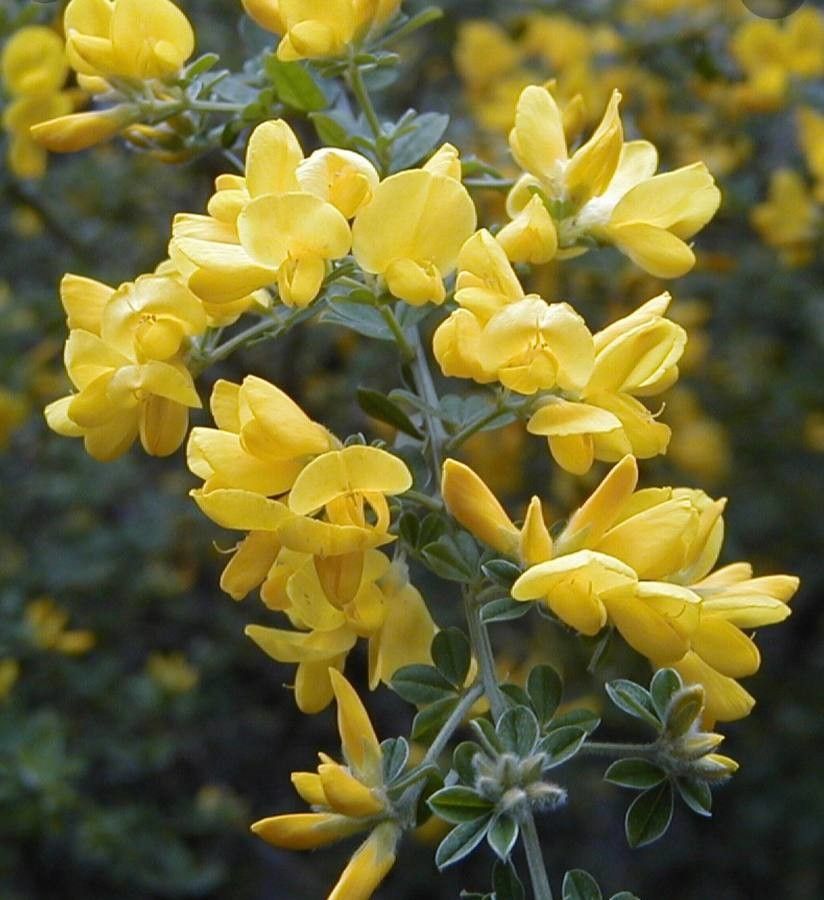Woolly Broom
genista pilosa
Also known as: ["Pilose Broom","Hairy Broom"]
Overview
A deciduous, low-growing shrub with small, bright yellow flowers and silvery-grey foliage.
Benefits & Perks
["long-flowering","wildlife attractant (bees, butterflies, birds)","drought tolerant","shade tolerant"]
Botanical Classification
| Phylum: | Magnoliophyta |
| Class: | Magnoliopsida |
| Order: | Fabales |
| Family: | Fabaceae |
| Genus: | Genista |
| Botanical Name: | Genista pilosa |
Plant Characteristics
Basic Information
- Category: Shrubs
- Suitable Location: rock gardens, slopes, or as a ground cover in sunny borders
- Suitable For:
- Is Weed: No
- Allergenicity: low
Environmental Needs
- Climate: {"temperatureRange":"–15–35°C"}
- Hardiness: {"zones":"4–8"}
- Misting: rarely required, only if grown in very dry indoor conditions
- Drainage: Fast-draining to prevent root rot.
- Soil Type: Well-draining, sandy loam with organic matter.
Maintenance Level
- Maintenance Level: moderate
- Toughness Level: high
- Pruning Frequency: Annually in late winter or early spring; light pruning after flowering.
- Pruning Intensity: Moderate; remove up to one-third of old growth.
Care Details
Ideal Sunlight Coverage:
Full sun (6–8 hours/day); tolerates partial shade but blooms best in direct light.
Sunlight Tolerance Tips:
Acclimate gradually to intense sunlight; protect from harsh afternoon sun in hot climates; ensure good air circulation.
Care Requirements
Care Difficulty
moderatemoderate
Sunlight
full sun
Rotate plant for even light; use sheer curtains to filter intense sun; avoid deep shade.
Watering
every 7–10 days during active growth, less frequently in winter
Water thoroughly but infrequently; ensure soil dries between waterings; avoid overwatering.
Soil
well-drained, sandy or loamy soil
pH: Slightly acidic to neutral (6.0–7.0).
Use cactus mix as a base; avoid heavy clay soils; ensure pots have drainage holes.
Temperature
Hardy in USDA zones 5–7; tolerates cold but prefers moderate temperatures (50–75°F); avoid extreme heat.
Avoid sudden temperature changes; protect from drafts; maintain consistent temperatures.
Fertilizing
every 4–6 weeks during spring and summer, none in fall and winter
Dilute fertilizer to half strength; apply to moist soil; avoid contact with roots.
Propagation
Methods
Stem cuttings or layering.
Step-by-Step Propagation Guide
- Take 4–6 inch cuttings.
- Remove lower leaves.
- Dip in hormone.
- Plant in medium.
- Keep moist.
Best Time: Late spring or early summer when growth is active.
Environment
High humidity (70–80%), indirect light, and warm temperatures (65–75°F).
Medium
Peat-based mix with perlite or sand for drainage.
Hormone
Rooting hormone recommended for faster rooting.
Timeline
Roots in 4–6 weeks; establish in 3–4 months.
Tools Needed
Pruning shears, rooting hormone, small pots, misting spray bottle.
Quick Tips
Use healthy, non-flowering stems; maintain humidity with a plastic cover; avoid direct sun.
Pruning & Repotting
Pruning Guide
Method
Selective thinning; heading back to encourage branching.
Pruning Plan
Shape plant to encourage bushiness; remove dead or weak growth; promote airflow.
Tools
Pruning shears, bypass cutters, gloves.
Checklist
Sterilize tools; prune dead/damaged stems; shape plant; clean up debris.
Repotting Guide
Best Season
Early spring before new growth begins.
Pot Size
One size larger pot; ensure it’s not too large to avoid waterlogging.
Method
Remove plant gently; trim roots if needed; use fresh soil mix; ensure drainage.
Suggestions
Repot every 2–3 years or when roots fill the pot; beneficial for growth and drainage.
Checklist
Choose right pot size; prepare new soil; handle roots carefully; water after repotting.
Advanced Care Tips
Watering Mastery
Watering Checklist
Check soil moisture; water deeply; ensure drainage; avoid wetting leaves.
How to Apply Water Properly
Water at the base of the plant, ensuring moisture reaches the root zone; allow excess water to drain away; water in the morning to reduce evaporation.
Watering Schedule Tips
Water deeply once the top inch of soil is dry; reduce frequency in winter to prevent root rot.
Soil Improvement
Add perlite or sand for drainage; incorporate compost for fertility; ensure good aeration.
Temperature Stress Management
Signs of Temperature Issues
Wilting, leaf drop, or browning edges in heat; stunted growth or blackened stems in cold.
Cold Stress
Slows growth; may cause dieback in severe cold; roots can rot in waterlogged soil.
Solution: Mulch heavily in winter; ensure well-draining soil; protect from frost with a cover.
Hot Stress
Leaves may scorch or drop; growth may stall; soil dries out quickly.
Solution: Provide afternoon shade; increase watering frequency; use mulch to retain moisture.
Fertilizing Guide
Fertilizing Checklist
Use balanced fertilizer; apply in spring; avoid over-fertilizing.
Fertilizing Method
Use a balanced, slow-release fertilizer in early spring; avoid feeding in late summer or winter.
Common Problems & Solutions
Toxicity Warning
Cats
ToxicGenista pilosa is toxic to cats, with the seeds and young shoots containing cytisine that can cause severe neurological and gastrointestinal effects. Cats are particularly sensitive to these toxins.
⚠️ Symptoms:
🌿 Toxic Parts:
⚡ Toxic If:
if eaten
Dogs
ToxicThe seeds and young shoots of Genista pilosa are toxic to dogs due to the presence of cytisine. Ingestion can lead to significant neurological and gastrointestinal distress, requiring prompt veterinary attention.
⚠️ Symptoms:
🌿 Toxic Parts:
⚡ Toxic If:
if eaten
Humans
Slightly ToxicGenista pilosa contains toxic compounds, primarily cytisine, which can cause mild to moderate poisoning if ingested. The toxins interfere with the nervous system, leading to symptoms such as nausea, dizziness, and muscle weakness.
⚠️ Symptoms:
🌿 Toxic Parts:
⚡ Toxic If:
if eaten
Frequently Asked Questions
Q: Is Genista pilosa toxic to pets?
A: Yes, it is toxic to dogs and cats if ingested.
Q: Does Genista pilosa attract wildlife?
A: Yes, it attracts bees, butterflies, and birds with its flowers.
Q: How much maintenance does Genista pilosa require?
A: It requires moderate maintenance, including occasional pruning and watering during dry spells.
Quick Reference
| Family: | Fabaceae |
| Care: | moderate |
| Light: | full sun |
| Water: | every 7–10 days during activ |
Get Expert Care Tips
Download the Plantious app for personalized care reminders and plant identification!
Google Play App Store








